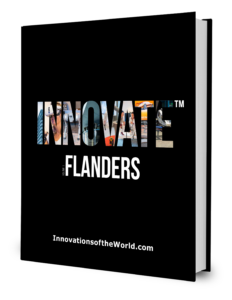Patent or publish, protect or disseminate… As a scientist in academia, these are questions I am faced with increasing frequency. We often assume that fundamental science and innovation proceed at different speeds, or even in entirely separate environments. After all, is there really space for innovation within the context of pure academic research at a Department of Physics?
For many years, I saw my role as a professor in electron microscopy as one of deep exploration – studying nanomaterials in as much detail as possible and leaving the application of these fascinating materials to others. When students developed new microscopy techniques, our pride lay in seeing them present their work to peers at conferences, not in considering commercial potential.
Until a few years ago, I was genuinely anxious about meeting with companies and the idea of stepping outside the academic bubble felt unsafe. But how much that perspective has shifted in recent years. Driven by funding agencies and, at times, nudged – or even pressured – by our institutions, I have come to realize that filing a patent does not prevent publication and that protecting knowledge should not be a scientific limitation.
A turning point came when I applied, and was awarded, with a prestigious ERC “proof of concept” Grant, aimed at translating a fundamental discovery resulting from my ERC Consolidator Grant into broader impact. Motivated by curiosity and a willingness to explore new territory, I found genuine excitement in connecting and collaborating with industrial partners, both in materials science and electron microscopy. I began to appreciate the challenge of identifying real-world problems and how the development of novel techniques – yes, innovations – might contribute to meaningful solutions.
What once felt like a burden – the need to write impact or valorisation sections in grant applications – has become an opportunity. Engaging with applied scientists, engineers, and policymakers has deepened my understanding of societal needs and expanded the context in which we do our research.
Today, the role of a professor is evolving. We are no longer solely educators or scientists. We are increasingly innovators, even entrepreneurs. Founding a spin-off is no longer an exception, and educating our students about intellectual property has become part of our academic responsibility. Mentoring PhD students does no longer exclusively mean that we are preparing them for a postdoctoral position, I find it very important to guide them toward careers that fully fit their skills.
At the same time, I remain convinced that institutions, funders, and policymakers must continue to support blue-sky research. After all, Edison didn’t invent the light bulb by trying to improve the candle. Unconstrained curiosity is still the root of the most transformative breakthroughs.
Prof. dr. Sara Bals is a Full Professor and head of the Electron Microscopy for Materials Science (EMAT) research group at the University of Antwerp. She specializes in electron tomography of nanostructured materials. Her research is supported by competitive funding, including multiple grants from the Research Foundation – Flanders (FWO) and the European Research Council (ERC), driving innovation and impact with her team.














